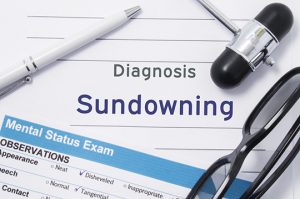What Nurses Should Know About Shift Work Sleep Disorder
During their careers, most nurses will work outside the “standard” hours of 7:00 am to 6:00 pm. With 12-hour shifts, flexible and rotating schedules, on-call duties, and job sharing, nurses and other health care professionals are at risk for developing Shift Work Sleep Disorders (SWSD).
You’re reading one of our “Nursing Career Guide” articles. Need to practice for your upcoming exam? Take our free NCLEX practice test -- no registration required! ✨
SWSD is a condition that occurs when you’re required to work outside your natural circadian rhythm, the internal 24-hour clock that controls the sleep-wake cycle. When the circadian rhythm is disturbed, it can be difficult to get adequate sleep. A disruptive cycle begins, leading to extreme fatigue, yet it’s nearly impossible to fall or remain asleep (insomnia). A person with SWSD loses between 1 and 4 hours of sleep every day.
In a study published in Sleep Journal in April 2019, about 49% of nurses averaged less than 7 hours a sleep per night, compared to 28% of the general population. SWSD was found in 31% of the study participants. If SWSD goes unrecognized or untreated, major health issues can develop. There is also a greater risk of workplace errors and accidents. It’s important to recognize SWSD, understand the implications, and then learn how to cope with it if you work or rotate shifts.
Symptoms to Look Out For
If you’ve ever worked night shifts, whether by choice or organizational policy, you already know the challenge of obtaining quality REM sleep time. Adults need about 20% REM time each night to stimulate the brain’s learning center, integrate memories, and produce proteins.
According to the American Academy of Sleep Medicine (AASM), there are two main symptoms of SWSD:
- Insomnia: A sleep disorder that happens when you have trouble falling and/or staying asleep. Insomnia can be acute, lasting from a couple of days to several weeks. Chronic insomnia is defined as happening 3 or more times a week, for 3 months or longer. The Sleep Journal study found that 31% of nurses reported chronic insomnia.
- Excessive Sleepiness: The struggle to stay awake and alert can affect work performance and contribute to medication or patient care errors. Also called Excessive Daytime Sleepiness, it is not a stand-alone condition, but a sign of an underlying problem. Nurses with excessive sleepiness feels the need to take a nap at least once during their shift. If you work during the night, you are more likely to experience sleepiness during the middle or end of your shift.
Insomnia and excessive sleepiness can result in any of the following:
- Ongoing malaise and fatigue
- Difficulty concentrating or paying attention
- Memory issues
- Irritability or mood disturbances
- Hyperactivity and impulsiveness
- Aggression or other behavior problems
- Lack of motivation or initiative
- More errors and/or accidents
Long-Term Effects
What happens if you develop a Shift Work Sleep Disorder? It turns out there is a lot more at stake than just feeling tired all the time. Researchers have found correlations between SWSD and some serious medical conditions.
The AASM lists some evidence-based outcomes of chronic sleep deprivation:
- Alzheimer’s disease: the gradual toxic accumulation of beta-amyloid, a brain protein that is linked to Alzheimer’s, leads to memory and learning impairment. Normal sleep time allows beta-amyloid to be flushed out; insufficient sleep increases the risk for dementia. (Along with SWSD, the repetitive disturbances and low oxygen levels that accompany obstructive sleep apnea can contribute to Alzheimer’s disease.)
- Cardiovascular disease: Sleeping less than 5 hours a day more than doubles the risk of developing a cardiovascular condition, especially for adults under the age of 60. Authors of the National Health Interview Survey stated, “The negative effects of sleep deprivation include impaired glucose tolerance, reduced insulin sensitivity, increased sympathetic activity and elevated blood pressure, all of which increase the risk of hardening of the arteries.”
- Depression: Harvard Health reports that sleep disorders increase the risk of developing depression. A longitudinal study of 1,000 adults found that a history of insomnia led to four times more major depression compared to normal sleepers. Depressed patients with insomnia are also more likely to contemplate and die by suicide than depressed patients who could sleep without difficulty.
- Immune system issues: Sleep and the immune system are intertwined. Consistent, good-quality sleep strengthens and balances the immune response. During normal sleep, production of cytokines, associated with inflammation, increases. Immune “memory” also occurs, reinforcing the body’s ability to recognize and react to dangerous pathogens. Sleep even improves the effects of vaccines. SWSD increases the risk of infection and inflammation, as well as healing time.
- Metabolic disorders: Multiple studies have shown the connection between sleep deprivation and insulin resistance, leading to type 2 diabetes. Without enough proper sleep, cortisol levels go up while testosterone levels go down. These changes cause an increase in serum insulin and glucose levels, predisposing a person to insulin resistance, obesity, and type 2 diabetes.
- Weight Gain: A couple of factors contribute to SWSD weight gain. First, you’re simply too tired to exercise and burn extra calories. Second, lack of sleep affects leptin and ghrelin, the two hormones that affect the sensations of fullness and hunger. Leptin signals the brain that you’re full; however, without enough sleep, leptin levels drop and the levels of ghrelin—the appetite stimulant—increase. Obesity then becomes a risk factor for developing type 2 diabetes, as well as some types of cancer.
Strategies to Help You Manage
With awareness of the potential consequences of Shift Work Sleep Disorder, you can start to develop some effective measures to prevent or minimize symptoms from insomnia and/or excessive sleepiness.
- 1Use your bedroom exclusively for sleep. Experts recommend making the bedroom a “sacred space,” to condition your brain that it’s a place for only sleeping. This means no work, devices, television, or food in the room. No activity, just rest.
- 2Make the bedroom conducive to sleep. Start by making the room dark, especially if you’re trying to sleep during the day. Hang blackout curtains and wear a sleep mask. Depending on the “noise factor,” use a white-noise machine, phone apps, or ear plugs. Ask your family or housemates to stay away from the closed door and keep conversations and television volumes low. Set the bedroom temperature at 65°F (18°C) if possible.
- 3Avoid caffeine and alcohol. Matt Walker, a sleep scientist, explains that caffeine is a psychoactive stimulant, affecting the amount of deep, non-rapid eye movement (NREM) sleep that restores our energy. Alcohol is a sedative, but it also interferes with NREM. Both caffeine and alcohol and block REM sleep. (See Walker’s TED Talk to learn more.)
- 4Shut off devices 30-60 minutes before bed. Televisions, phones, tablets, laptops, and video games generate blue light that can decrease melatonin production. The human eye is not able to effectively block blue light, which impairs our ability to prepare for sleep. Besides reducing melatonin levels, devices can stimulate the brain, keeping us awake thinking about what we’ve seen, heard, or done.
- 5Develop a sleep ritual. Help your brain and body get ready for bed by establishing and keeping a routine. Set definite times to go to sleep and wake up, and stick with them as much as possible, even during days off. Follow the same procedure every night: start to wind down about 30 minutes before bed by reading, listening to music, or whatever activity you find calming; take a warm shower or bath; perform skin care, and brush your teeth; and use a relaxation or meditation technique before falling asleep.
- 6Find the sleep pattern that works for you. There is supporting evidence for a variety of sleep patterns for shift workers. Aim for 7-9 hours of sleep; how you get those hours depends on your preference. Some experts recommend going straight to bed after a night or off-hours shift, to avoid becoming more awake and alert during the day. Others suggest staying up and sleeping until it’s time to go to work. Maybe a “split sleep schedule” will be best: Sleep 4-5 hours right after work, then take a 2-3 hour nap before getting up to go back to work.
Tips for Staying Alert at Work
Even with good sleep hygiene, everyone gets tired sometimes. Always monitor your level of alertness when you’re at work. You already know that the risk of workplace error or accident is higher with sleep deprivation. There are a few tricks to temporarily help you become more awake:
- Caffeine can definitely help, but take it in moderation. A small amount every 1-2 hours is more effective than a large amount when you suddenly feel sleepy.
- A little exercise, such as a short walk, can make you more alert. If you can get outside for a few minutes, that’s even better.
- Is a short nap possible? Just 15-20 minutes can be refreshing. More than 20 minutes can leave you feeling groggy, so set your phone alarm accordingly.
- Eat a light, balanced diet. You and your co-workers may want to order pizza occasionally, but otherwise, stick with lean proteins, fruits, and vegetables.
- Stay away from sugary or processed foods. They contribute to a sluggish feeling, as well as to weight gain.
- Keep your workstation as brightly lit as possible. Patient rooms and hallways may have dimmed light, but bright light helps you adapt to a non-traditional cycle.
Don’t Wait to Get Help
If you recognize that you’re developing symptoms of SWSD, don’t postpone getting help. After you have made every effort to get high-quality sleep and haven’t been successful, it’s time to seek professional help.
Make an appointment with your primary health care provider, who is familiar with your medical history. They may request that you keep a sleep diary for a short time, or they may go ahead and prescribe a mild sleep medication. Be sure and follow their directions, including scheduling a follow-up visit.
Other tests or therapy options for SWSD can include:
- Laboratory tests
- Sleep studies
- Cognitive therapy
- Biofeedback
- Medications
Besides getting help for yourself, you and your co-workers can ask the organization’s managers to provide safe scheduling practices. Managers should prepare schedules with no more than three consecutive days, especially for 12-hour shifts. There should be at least 11 hours between shifts, to allow for adequate sleep. If rotating shifts, nurses should be scheduled in a “clockwise” rotation, progressing from days to afternoons to nights.
Sleep is a fundamental biologic need. Nurses need to obtain high-quality sleep, in order to provide safe, effective patient care. Make your own health the first priority by ensuring that you are doing everything to get a good sleep, no matter what hours or shifts you work.
 By
By 



